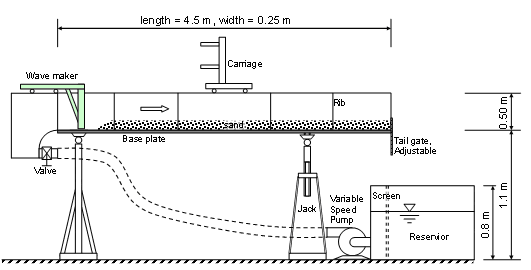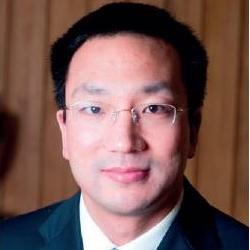Biography
Dongfang Liang graduated in hydraulic engineering from Tsinghua University in China (BEng in 1998 and PhD in 2003). His PhD project involved the measurement of shallow water flows using the large-scale PIV (Particle Image Velocimetry) and PLIF (Planar Laser Induced Fluorescence) techniques. When working in the University of Western Australia and Cardiff University as research associates, he widened his research by concentrating on numerical modelling of local scour phenomena and flash floods in urban environments. He is now a Professor of Hydrodynamics and a Fellow and Director of Studies of Churchill College.
Prof Liang visited Kyoto University as a Matsumae International Research Fellow in 2012, TU Berlin as a Humboldt Research Fellow for Experienced Researchers in 2013-2015, and Deltares as a Marie Curie Fellow in 2016. He was also a Royal Academy of Engineering Industrial Fellow in 2015.
Research
Prof Liang's current research topics include flood risk management, water/soil/structure interactions and hydro-environment. He has studied shallow water flows, rainfall-runoff processes, ocean wave propagation and runup, scour and liquefaction around offshore structures, seepage and overtopping induced embankment failure, flow-like landslides, turbulent mixing and water pollution.
Prof Liang has developed several mesh-based and meshfree computational models for his research, and has expertise in digital image processing and its application in hydraulic experiments. He is the chairman of the local organising committee for the MPM2019 Conference (http://mpm2019.eu), and has recently been sponsored by the Cambridge Centre for Smart Infrastructure and Construction (https://www-smartinfrastructure.eng.cam.ac.uk) and Trimble Fund to apply advanced drone technology to monitor floods and landslides.
Research Themes:
Hydrodynamics and Hydro-Environment
The importance of water cannot be overemphasised in sustaining life and maintaining public health. Water also presents itself as an important natural force in transporting sediments, nutrients, pollutants etc. In the form of floods, storm surges, rogue waves and tsunamis, it can leave huge swath of devastation. With the increasing exploitation of offshore resources, including marine renewables, study on the interactions between water flows, offshore structures and seabed becomes more and more important. Our increasing environmental awareness and recreational usage of waters demand a better understanding of the fate and distribution of pollutants, such as toxicants and pathogens, within water bodies.
People linked with this: Prof Liang, Prof McRobie, Prof Fenner
Facilities and equipment:
Oscillating Tray Rig
A flat tray oscillates with simple harmonic motion in a tank of water 2.5m long, 0.35 m wide and 0.8 m high. The tray is filled with sand and can be mounted with different model structures, so that the development of sand ripples and dunes and the scour around offshore foundations in oscillatory flow conditions can be tested.

A variable-slope flume of 4.5m long, 0.25m wide and 0.5m high is equipped with a piston-type wave maker and a centrifugal pump, so that both wave and current can be generated.
Shallow Water Tank
A flat-bed flume is 3.5m long, 0.6m wide and 0.2m deep. Water can be circulated by a small pump.
Publications
Please see link for my publication list.
Teaching and Supervisions
Dongfang is the module leader for 3D5 Water Engineering. He also teaches Engineering Surveying.



